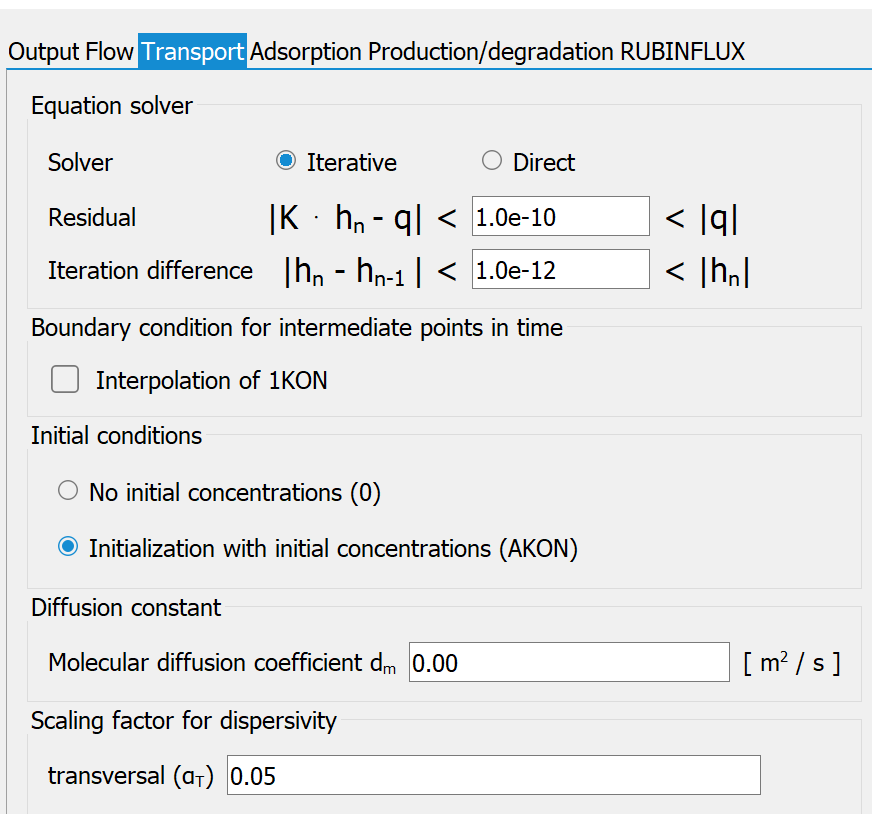After calling up the "Transport" tab window, the following input window appears for the parameters of the transport calculation:

Equation solver
Either the iterative PCG solver or the direct Cholesky equation solver can be selected as the equation solver. Due to its advantages in terms of computing time and memory space, the iterative equation solver is recommended from approx. 500 nodes. In contrast to the direct method, the solution is not calculated exactly, but the error is usually negligible. An accuracy check can be carried out using the mass balance specified in the output file. Explanations of the equation solvers and cancellation criteria can be found under "Steady state flow - Advanced settings in the SITRA module".
Equal concentrations for GLEI
Here you can specify whether equal concentrations should also be calculated at nodes with the GLEI attribute.
For nodes at which equal potential heads have been defined, you can select whether the concentrations at these nodes should also be set equal or whether this is not desired. Equal concentrations with equal potential heads make sense at perfect wells, for example (potential heads are equated over the height). If there are large open water areas (lakes with equal potential heads) in the transport model, equating the associated concentrations can be interpreted as follows:
The concentrations arriving at the inflow edge of the lake are transported directly to the outflow edge of the water surface without any time delay. If the concentrations are not a transport takes place in the area of the open water surface. Since velocities of almost 0 are then calculated in elements within the water surface, this approach will lead to major numerical problems. In principle, a transport model with a large open water surface in the area of the expected substance dispersion can only be calculated with the existing calculation methods under simplifying assumptions, as the transport processes in the open water surface cannot be calculated with a flow and transport model that is created for the neighbouring aquifer.
Boundary conditions for intermediate point in time
If the calculation is performed with a fixed time step size or with reduced time steps of the transient input file, it is possible to interpolate the transient boundary conditions for the concentrations for the intermediate time steps that are not defined in the transient input file. The same explanations that have already been described for the transient flow calculation apply.
Initial conditions
The initial concentrations with which the transient transport calculation is started are defined here:
No initial concentrations: The iteration is started with initial concentrations c0= 0.0.
Initialisation with initial concentrations (AKON): The initial concentrations defined in the model file (AKON) are used here.
If a transient calculation has already been carried out, this can be continued with the result concentrations saved in the null-file. This is defined when selecting the output parameters (Save for continuation (out66))
Diffusion constant
Specify the molecular diffusion coefficient dm in [m²/s].
Dispersivities
Specify the scaling factors for the transversal-horizontal (αTH) and transversal-vertical (αTV) dispersivities [m].
The scaling refers to the longitudinal dispersivity, which is defined in the model file by the DISP attribute.
 Advanced: Adsorption
Advanced: Adsorption